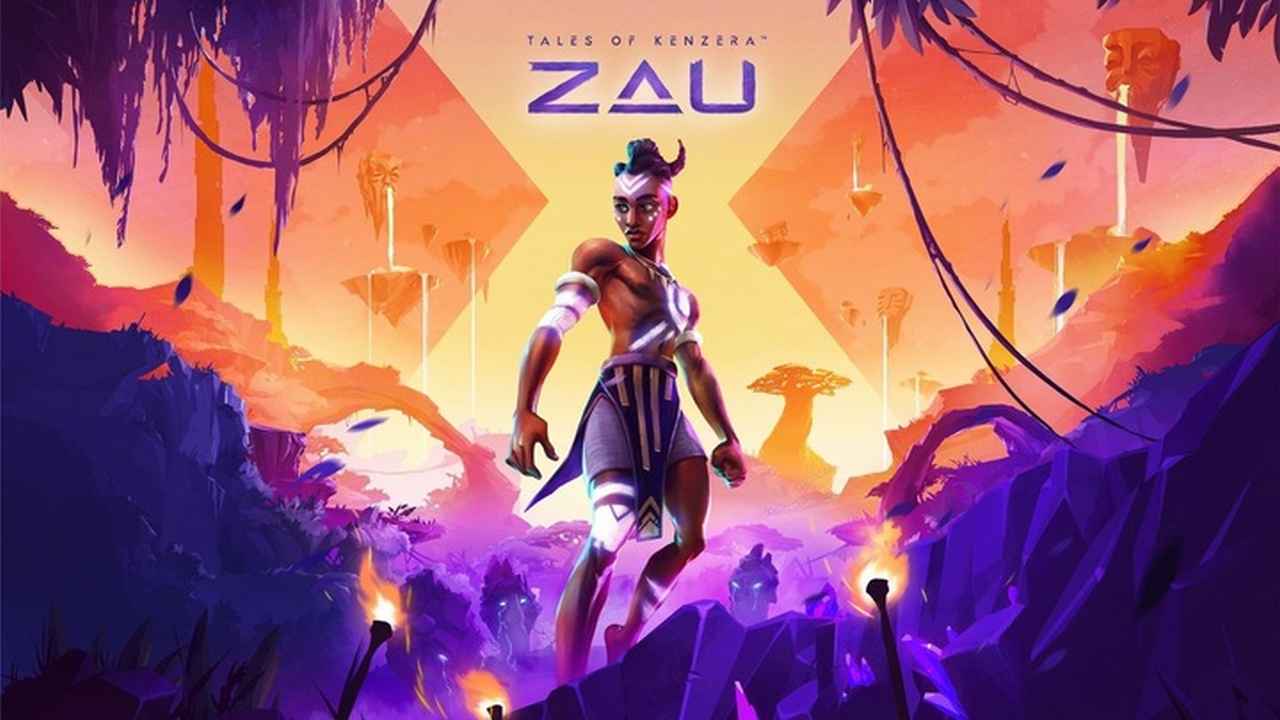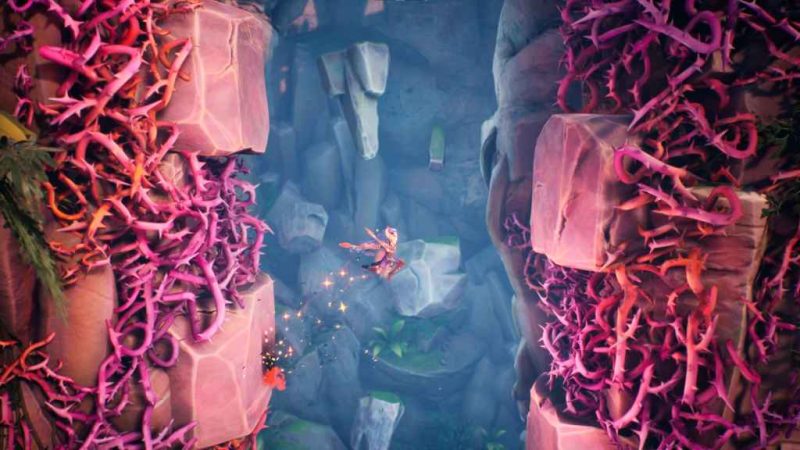Tales of Kenzara: ZAU Hands-Off Preview (PS5) – Embarking On A Heartfelt Action-Adventure Platformer

Tales Of Kenzara: ZAU Hands-Off Preview (PS5) – For Surgent Studios, their mission was very clear from the moment of their inception: to craft experiences that unite people through the many conventional means of storytelling.
Abubakar Salim, founder, and actor for Bayek in Assasins Creed Origins, wanted to further instill this vision in their debut game, Tales of Kenzara: ZAU.
Set to grace both the PS5 and PS4 systems, this single-player action-adventure platformer delves deep into the bonds of love, loss, and the resilience of the human spirit.ZAU is a heartfelt single-player action-adventure platformer about the love between a son and father, and how loss can influence us, for better or worse.
Guided by the Metroidvania genre, the game mirrors the journey of coping with loss. Just as one navigates through the stages of grief, players must traverse diverse environments, grapple with challenges, and acquire new skills to progress. Read on to find out from our hands-off preview why this game is the next title to add to your never-ending backlog.
Tales Of Kenzara: ZAU Hands-Off Preview (PS5) – Embarking On A Heartfelt Action-Adventure Platformer
In The Throws Of Grief
The story revolves around Zuberi, a young man grappling with the profound loss of his father. To cope with his emotions, the game creatively alternates between Zuberi and “ZAU,” where players witness their evolution as they confront their emotions head-on.
Both dualities of the time periods play a pivotal role in the progression of the game and experience.
Despite its somber theme, Tales of Kenzara: ZAU bursts with vibrant colors, each hue symbolizing a different facet of the emotional spectrum. Ackeem Durrant, the lead art and character designer was tasked with presenting the game in a way where constant feelings and emotions are happening all at once, and the color enunciates these feelings.
The Power Of The Sun And The Moon
As there is a death, there is also the celebration of life as well. As the studio continued with its presentation of the game, the team members presented the many vibrant aesthetics of the game’s world.
From the spiritual tranquility of purple to the fiery intensity of red, the game’s visuals serve as a poignant expression of the character’s inner turmoil.
Purple is spirituality and peace in the high mountains. Anxiety is orange and yellow in the grasslands. Fear and loss are dark colors in claustrophobic forests. Anger and acceptance are red and orange in decayed, vast areas that have been abandoned.
These colors express a different array of emotions as the player progresses through these levels.
Cultural influences infuse every aspect of the game, from the majestic landscapes inspired by African tribes to the rhythmic combat mechanics rooted in shamanic traditions.
As players harness the powers of ZAU to overcome obstacles, they’ll find themselves confronted with their vulnerabilities, uncertainty, and the imperative to adapt and survive.
Zi Peters, lead designer was appointed the task of their game mechanics, how players will traverse, interact with objects, and combat. The team demonstrated the combat through “the dances of the shaman”, masks that float around ZAU with their own unique abilities.
The Mask of the Moon specializes in long-range, great for crowd control during combat. The sun mask is best for close quarters. Combat will be unpredictable, there will be lots of uncertainty, and vulnerability, and it is your task as the player to adapt and survive based on your playstyle.
Forging A Path
Traversing through the game’s intricately designed loops mirrors the cyclical nature of grief, offering players opportunities to confront their past and forge a path toward acceptance.
“Ability gates” prevent the player from progressing through the game, expressing Zau’s emotional state as well as the trials you must face to find the solutions needed to progress.
The puzzles must be solved by relying on your abilities as well as the environment. You will be presented with opportunities to stop, reflect, and test out your theories for solving puzzles. This gives great incentive for players to form creative solutions in overcoming puzzles and obstacles.
The map design is set in loops. In relevance to grief, you as a player are faced with previous locations, and side tracks as a means to face your past and previous experiences to progress through problems in the future.
Despite being a design of predestined paths, the world of ZAU has been designed very openly for players to explore, a feature that is a staple for the Metroidvania genre.
Every room will feel like an unknown adventure, as players must always be ready to face any challenge that may come.
The evocative score composed by Nainita Desai serves as a haunting, yet beautiful backdrop for grief and acceptance as the game captures the depths of sorrow and the resilience of the human spirit.
The hands-off presentation for the game made the importance of emotions prevalent and how chaotic, deep, and heartfelt they can be. This was very important for the game to express these emotions through the soundtrack.
With the mix of musical traditions of Africa, ZAU expresses culture and depth in emotions with class and cultural expression and diversity of African traditions, evoking players to reflect and truly feel the emotions they experience on screen.
Building Off The Classics
Drawing inspiration from classics like Super Metroid and Symphony of the Night, Super Metroid, and Guacamelee!, Tales of Kenzara: ZAU seamlessly blends intense combat reminiscent of Devil May Cry with the emotional depth of modern masterpieces like Ori and Hollow Knight.
But beyond its gameplay mechanics, the game continues to carry a powerful message of self-acceptance and the importance of embracing one’s emotions.
The talented team at Surgent Studios aims to inspire players to confront their challenges with courage and resilience.
Abubakar Salim wants to express to players that, “it is ok to be not ok”, and how important it is to face your inner wounds and take the steps to heal one’s self.
Overall, the team hopes to inspire other storytellers through this game, to continue to express deep emotions in the experience, and to cover deep emotional subjects while at the same time being creative and leaving a lasting impact for players to reflect on.
It’s Okay To Not Be Okay
With this, the team wants players to take on the challenges in the game, and come out of those challenges with the mentality of “you are not alone and you can overcome any troubles life throws your way”.
The hope for the studio is that players take heed of this message and apply it to their lives. Through their collective passion for storytelling, they hope to encourage others to explore themes close to their hearts and to appreciate the transformative power of art.
The colors found in levels, the design of the game, as well as the music have a fantastic synergy to form the beautiful narrative in Tales of Kenzaru: ZAU.
It is more than just a video game—it’s a testament to the human experience, a reminder that it’s okay to not be okay, and a beacon of hope for anyone navigating the tumultuous journey of grief.
Be sure to keep an eye out for our review on PS5 in the coming weeks to solidify your purchase for this beautifully emotionally enriched action-adventure Metroidvania.
Tales of Kenzaru: ZAU releases on PS4 and PS5 on April 23rd, 2024.










